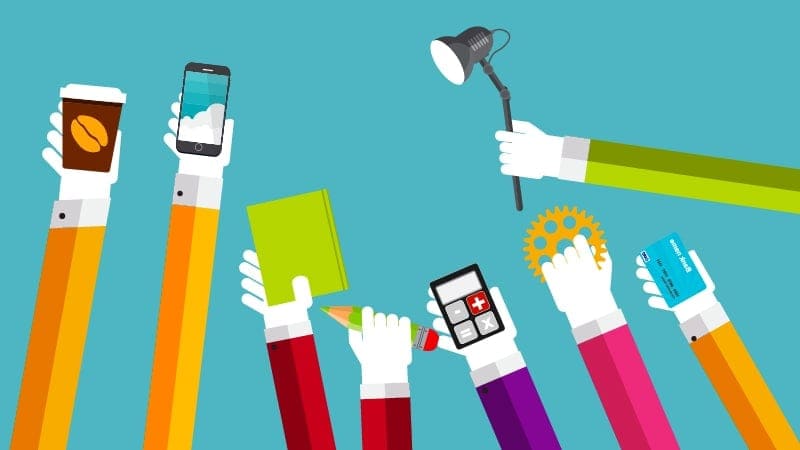If you’re new to LeaderTalk, you may not know that I am a work-at-home mom. In addition to writing and promoting LeaderTalk, I homeschool a kindergartener, cajole a toddler, carpool a third-grader, and keep our home running smoothly. Oh, and I also teach online for Mountain State’s BSOL program.
In most cases, my Monday through Friday, eight to five, is a one-woman multi-ring circus. If you’ve ever talked to me on the phone, you know this to be true.
But I don’t do it all alone.
I also work with a great team: two friends at Mountain State who probably prefer not to be named. I’ll call them Jack and Jill.
Jack and Jill review everything I write for this blog. We also collaborate on a wide variety of other writing projects, most of which you will never read.
While preparing for this week’s classes with my BSOL students, I revisited the MBTI and starting thinking about how personality types contribute to a team’s dynamic.
Part of what creates the magic in my team relationship with Jack and Jill is that our personalities are a great mix. We are similar enough to get along well, and different enough that our strengths are complementary.
We are an ENFJ, and INTJ, and an ENFP.
Jill and I, who share the “J” in our types, are more focused on routines and deadlines than Jack. Often, I bring structure to Jack’s energetic visions, and Jill makes sure that we both pay attention to details. Jack and I, who share the “F” in our types, can be easily caught up in the emotions of office relationships. Jill can stay with her “T” and help us see things from a logical point of view. We all share the “N,” so our creative sensibilities are similar.
I will say it again: we are similar enough to get along well, and different enough that our strengths are complementary. We understand each other, and working with together feels like home.
The MBTI can be a great tool to help your team grow in understanding and appreciating each other’s strengths and needs. Chances are, you may be drawn to work with people who share your traits; frustration comes when you work with people who are radically different from you.
Using the MBTI may help you bring a new dynamic to your team.
First, take some time to know yourself well. Recognize both the strengths and the limitations of your traits.
Then, get to know the types of your team members. You may gain great insight from reading about their type; you may have an “aha” moment where you can finally identify what it is about someone else that makes your relationship work smoothly (or not.)
Remember, there are no right and wrong personality types on the Myers-Briggs. Although you may prefer to work with people who are very much like you, you may learn more and be stretched to see things in a new way by someone who is radically different from you.
Relationship magic will happen when you find a group of people to work with with just the right mix of personality traits, people who are similar enough to you that you get along well and different enough that your strengths are complementary.
Just like Jack, Jill, and me.
Join the conversation!
In what ways have you used the MBTI to increase your teams effectiveness?
This was originally posted at Mountain State University LeaderTalk and is re-posted with permission.

I am the founder/CEO of the Weaving Influence team, the author of Reach: Creating the Biggest Possible Audience for Your Message, Book, or Cause, and the host of the Book Marketing Action Podcast. I’m a wife and mom of three kids, and I enjoy running, reading, writing, coffee, and dark chocolate.


Becky –
I agree, the MBTI, or any assessment that provides insight as to what makes us tick, is a great way to improve teamwork. Sharing this kind of information as a team builds trust, which is the foundation of a healthy team.
Thanks for sharing your thoughts in this post and for taking the time to contribute to the online community on top of your demanding domestic responsibilities. I truly admire that.
I’ve taken the MBTI several times. Each time I think, wow, this is great. Now I can really understand all the quirky relationship dynamics I’ve puzzled over for years. I think that and then life happens and a couple weeks later I can’t even remember what I am anymore.
I think it valuable, but I also think it takes some concerted effort to understand what it means and to then apply it to our relationships.
To me it has limit applicability since I’d either have to ask people what their personality type is (assuming they’d taken the MBTI and could remember it), or I have to observe them for a while and guess.
In that respect I’m back to just using my intuition to develop relationships.
A funny thing happened on the way to the Internet. I retook the MBTI for the first time in years two days before this entry was published. Great minds think alike, I suppose. Anyway… I am an INTP, apparently the rarest of all breeds.
After taking it, I started wondering what results I’ve had in the past. And that actually raises a question.
While I’m sure there has been plenty of research about the different types and how they interact, I’m curious if there has been any study of whether or not people’s types change over time as they develop professionally and/or personally. We are all growing and changing, so it sounds like this would impact team dynamics. The effects may be too gradual or subtle to pick up on from a day-to-day perspective, however.
Great insights here on using this tool to explore the gestalt of a team’s personality… thanks.
The MBTI is a great tool to help a team identify individual personality traits, understanding the “value” areas that can strengthen the team. Effectively using the personality traits of each member can energize the group and establish a solid foundation for team dynamics and success. Great post!
One of the greatest insights I was ever given in using MBTI was to think of the various attributes not as personality traits but as personal preferences. We all recharge and process information either externally or internally; we all have the capacity for creativity and for attending to detail; we certainly all think and feel; and we all are capable of adhering to a strict schedule or “going with the flow.” I realize these are somewhat simplified definitions but the point is that the results of Myers-Briggs do more to tell us how we prefer to respond to a given situation rather than providing us with the proper label for our pigeon-hole.
In applying this to the study of our group dynamics this becomes important because it introduces the necessity for maturity into our interactions. In the context of applying MBTI I once heard maturity defined as “the ability to choose against what you prefer in order to do what is best in a given situation.” For example, I am a high, high ‘E’ in Myers-Briggs-speak yet there are times when I know that the people around me are all exhausted or stressed out and I need to recharge internally instead of trying to engage them socially. I also am a very solid ‘N’ but my duties at work require me to engage in details or I will let down my teammates and my customers.
As we analyze how our various preferences interact with one another, if we view them as hard-coded attributes we can become frustrated when personalities clash. When we realize that both parties are capable of acting against their preference to do what is best then we create opportunities for dialogue, compromise, and healthy resolution.